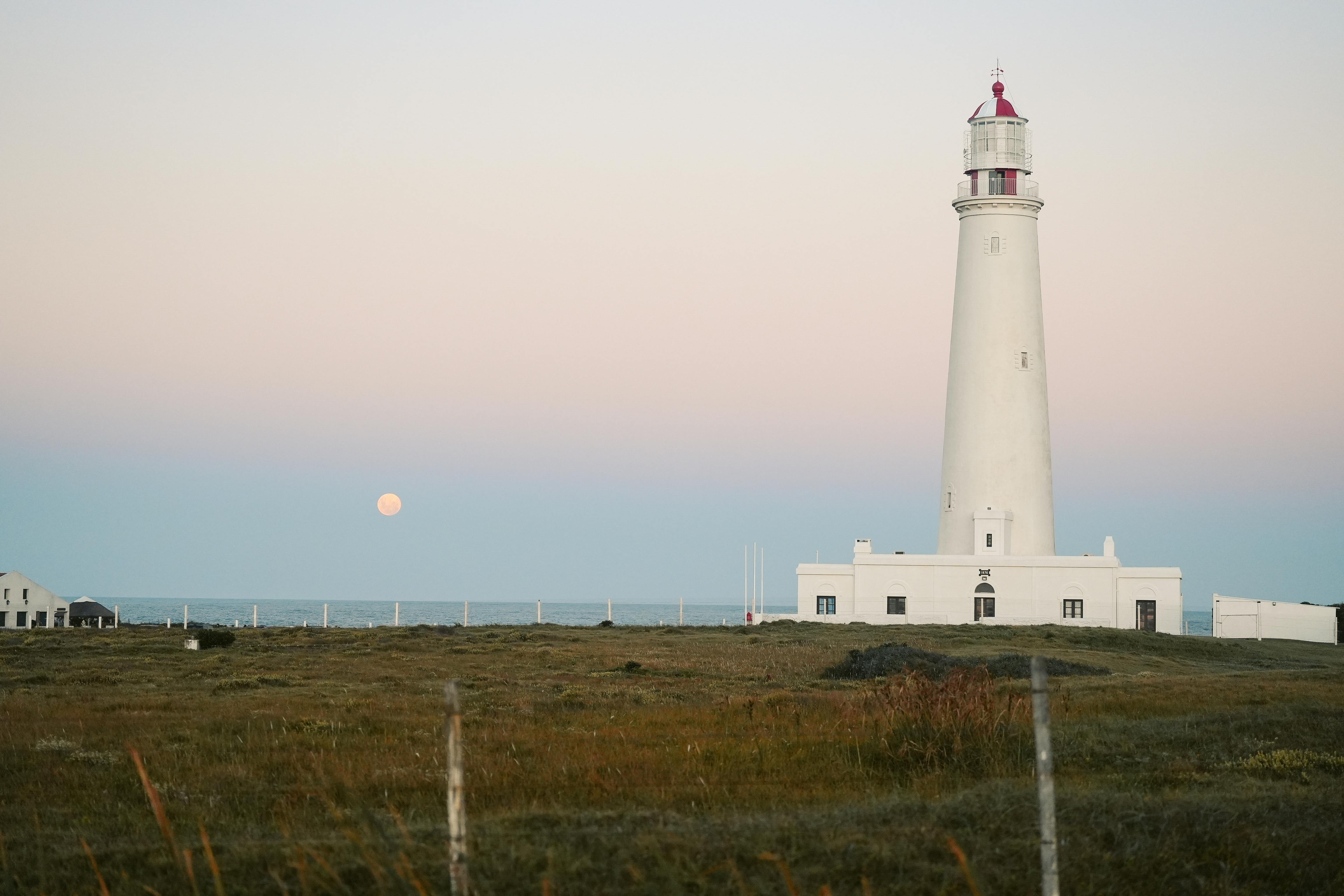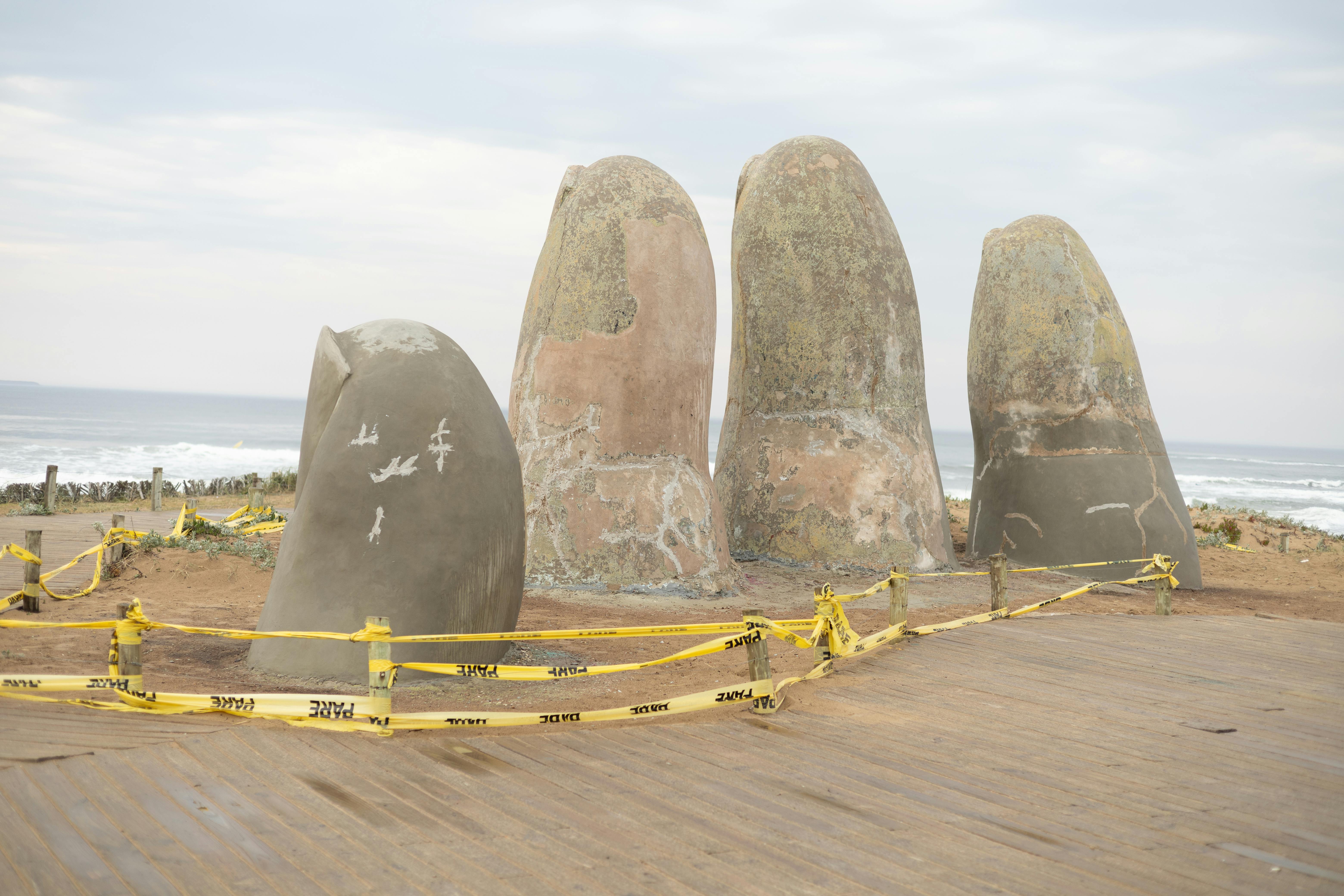Uruguay Travel Safety: Lifelong Habits for Solo & Family Travelers
Let’s be honest for a second—when most people start talking about travel safety in Uruguay, you get the same old list: “keep your passport safe, avoid dark alleyways, and watch your stuff at the beach.” Useful? Sure, at face value. But having traveled across Uruguay both solo and with a family in tow, I’ve found most practical safety habits aren’t learned from checklists; they’re lived, refined, and (sometimes embarrassingly) learned through near-misses, cultural slip-ups, and those moments you wish you could take back. The heart of real travel safety is a mix of skill, awareness, and a dash of humility.
In my experience—whether you’re a first-timer flying solo into Montevideo or a seasoned parent dragging teenagers across Punta del Diablo’s dunes—building genuine, lifelong safety habits is less about memorizing warnings and more about cultivating adaptive, context-driven behaviors. This article is for anyone caught between wanderlust and worry, craving actionable, locally-tuned habits that aren’t just about avoiding disaster, but about thriving boldly and responsibly in Uruguay, one of Latin America’s safest (yet delightfully unpredictable) countries1.
Understanding Uruguay’s Unique Safety Landscape
Let me step back for a minute. Before you can build good safety habits, you need to grasp the terrain. Uruguay’s travel safety is a paradox. Statistically, it’s South America’s safest country (according to recent United Nations data2), with low violent crime rates, strong infrastructure, and a famously chill vibe. Yet, plenty of travelers (myself included) have made silly mistakes simply by assuming “safe” means “risk-free.”
Uruguay was ranked the safest country in Latin America in the 2024 “Global Peace Index,” outpacing both Chile and Costa Rica for overall personal safety and political stability. However, the report still recommends vigilance in urban areas, especially at night.
Montevideo feels cosmopolitan, but petty theft is a reality—especially in crowded bus terminals. Punta del Este is glitzy, but beaches can get rowdy in summer. Smaller towns might feel sleepy (and usually are), but relaxed attitudes can breed complacency if you aren’t paying attention. In short: local context matters. The lesson? Safety is a dynamic skillset—it flexes with your location, season, and even the kind of traveler you are. Honestly, it took me several trips (and a memorable incident involving misplaced passports in Colonia) to stop treating “safe destination” as a universal get-out-of-jail-free card.
“Uruguay’s gentle reputation shouldn’t tempt travelers into letting down their guard. Lifelong safety habits are about anticipation, not paranoia.”
Core Safety Habits: Building Blocks for All Ages
What really strikes me after countless conversations with locals and fellow adventurers is how good travel safety in Uruguay comes down to a few core habits. And they’re less about gear or gadgets than about awareness, adaptability, and communication. Here’s the thing though: my earliest solo trips here, I thought the problem was pickpockets. Turns out the bigger risk was not knowing whom to ask for help (seriously—Uruguayans are super approachable, but you have to initiate).
- Stay situationally aware: Even in relaxed beachfront towns, notice exits, crowds, and local rhythms. Let complacency creep in, and you’re halfway to trouble.
- Blend in, don’t stand out: Tone down obvious tourist markers—overly branded backpacks, flashy tech—and embrace local pace. It’s about respect and good self-preservation.
- Develop micro-routines: Maybe you triple-check bus schedules. Maybe it’s always confirming taxi prices up front. Small, repeatable behaviors matter—Uruguayans do this almost unconsciously.
- Build trust networks: Exchange info with hotel staff, chat with fellow travelers, save embassy hotlines in your phone. When things go sideways, these quick connects become lifelines.
- Communicate transparently: Tell someone your plans. Especially critical in more rural or surf-focused destinations, where cell signals can drop.
Wichtige Erkenntnisse
The most useful safety habit? Treat every new place as if you’re starting from scratch—even if you’ve been to Uruguay a dozen times. Familiarity is comforting but blinding. Keep those “beginner eyes,” and you’ll catch the stuff everyone else misses.From here, everything branches—whether you’re navigating with kids or soaking up Montevideo’s nightlife solo. One thing’s certain: good habits aren’t built overnight, and they aren’t one-size-fits-all (I learned that after my first sunburn-sprained ankle combo at Playa Ramirez). Next up, let’s break down how solo and family approaches naturally diverge—and overlap.
Solo Adventures vs. Family Travel: What Changes?
Honestly, I used to assume “safety is safety”—what works for one works for all. That’s a myth I abandoned the hard way. Whether you’re solo or lugging three kids through a bustling Montevideo mercado, the risks and responses shift—sometimes dramatically. What’s wild is how many of my own habits emerged from watching how local families operate versus the rhythm of solo backpackers. Uruguay functions as a sort of safety laboratory: rich, diverse, and—yes—full of curveballs you don’t see coming until you’re knee-deep in them.
Solo Traveler Safety: Flexibility Over Predictability
Persönlicher Unterricht
My biggest solo travel mistake in Montevideo? Over-planning. Weird, right? The urge to “control the chaos” almost backfired during last year’s carnival parade when I rigidly stuck to my route—missing a crucial police warning about pickpocket “hot spots.” A quick chat with a street vendor saved my phone and my pride.- Real-time adaptation wins: Make rolling assessments, not rigid routines. Notice crowd shifts, neighborhood energy, changing weather—especially around Uruguay’s unpredictable Rio de la Plata coast3.
- Leverage local networks: Uruguayan society is famously small-world; a connection from your hostel manager often goes further than official channels, especially in Carmelo or Rocha.
- Self-advocacy matters: Practice saying “no” (firm, but polite), and trust gut reads on situations, be it invitations or taxi fares.
- Stay digitally empowered: Backup documents to secure cloud storage. Use offline maps in areas with spotty data coverage—yes, those still exist in inland Uruguay!
“Traveling solo in Uruguay is largely safe, but isolation can amplify small mistakes. Fast, confident communication is your best defense.”
Family Travel: Proactive, Layered Safety
Switching gears, here’s a scenario: You’re wrangling two overtired kids through Parque Rodó, distracted by churros and street magicians. Suddenly your youngest disappears—gone in a heartbeat. I used to think this was an overblown parental fear. Then it happened to a friend’s family (reunited quickly, but the panic was real). Uruguay’s family-friendly infrastructure makes things easier, but routines—know them, practice them, never take them for granted—are your anchor.
- Routine, routine, routine: Set non-negotiable rules. Sunglasses stay on, buddy system is law, and “wait at the big statue if you get lost.”
- Prepare for health hiccups: Know basic first aid, allergy protocols, and where the nearest emergency clinics (usually “médico de guardia”) are found—especially during Uruguay’s humid summer months when bugs flourish4.
- Divide and conquer: In crowds, assign each adult a zone of responsibility. I learned this the hard way—multitasking is a lie when wrangling kids in a crowd.
- Communicate the “what ifs”: Walk through scenarios calmly (“What do you do if we’re separated at the feria?”). Make it almost playful; fear rarely teaches, but practice does.
- Anchor to safe hubs: Identify tactical meeting points everywhere—museums, playgrounds, boardwalks. Drill it until it’s second nature.
Quick Family Tip
Introduce local emergency numbers to your family. Uruguay uses 911 for emergencies—program it into every device, practice using payphones, and know the basic Spanish phrases. Trust me, practicing this once is worth infinite peace of mind.Local Insights: How Uruguayans Practice Everyday Safety
Here’s where things get interesting. Most valuable safety lessons I learned in Uruguay didn’t come from guidebooks; they came from watching and chatting with Uruguayans. A neighbor in Punta Ballena showed me how to “read” the mood on the rambla at dusk. Another friend (a teacher in Florida, Uruguay) demonstrated how to blend in by adopting local habits—language, dress, even nonverbal gestures.
- Observational skills: Uruguayans notice subtle shifts—like when public spaces empty out before a sudden downpour or local kids switch playgrounds in the evening.
- “Safety in discretion”: Locals generally avoid flaunting valuables—phones, jewelry, even premium mate gourds. The less you advertise, the lower your risks. (Learned after a cringe-worthy first-week iPhone incident on the Pocitos boardwalk.)
- Network-relational security: Social ties are survival skills. Not just for emergencies, but for everyday navigation—what bus routes avoid late-night trouble, which beaches are truly family-friendly after dark.
- Respect for public order: Littering isn’t just frowned upon—it’s a marker of “outsider” status. Keeping public spaces tidy is a sign you belong, which often earns you protective attention from locals.
“In Uruguay, safety flows from community and social trust, not from fear. Engage, watch, and learn from your neighbors—even if you’re just passing through.”
Ever notice how certain street corners always seem busier, even when “out of the way”? There’s often a reason. A lot of South American cities struggle with organized petty theft, but Montevideo and Colonia’s neighborhoods tend to self-police detail in ways travelers rarely see (and rarely understand at first). What I’m getting at: Your real safety net isn’t walls or locks—it’s invisible, social, and built through tiny everyday interactions.
Uruguay is infamous for its “mate breaks”—mid-afternoon pauses where almost everyone steps outside with a thermos. Joining in isn’t just about caffeine; it’s a subtle way to blend in and earn a bit of local trust (plus, you get great travel tips in the process).
One last thing here: Uruguayans—like most—don’t love being given “safety advice” by outsiders. Observe, adapt, ask questions humbly, and you’ll be amazed at how much safer (and richer) your experience becomes. Up next, we’re going deep on seasonal, regional, and situational safety habit tweaks you actually need—is winter really safer, or is that just a myth?

Seasonal & Regional Adjustments: Myths and Realities
Now, here’s something the guidebooks gloss over. People tend to think, “Outside summer party season, everything’s calm—danger drops to zero.” Actually, let me clarify that: in some ways, it’s true. Winter in Uruguay sees fewer big gatherings, and therefore, less pickpocket activity. But new risks surface: unpredictable weather, slick coastal highways, even the occasional crime-of-opportunity when tourism drops and some areas quiet down. My perspective? The “safest season” depends on what type of traveler you are—and what you plan to do.
| Region | Peak Risks (Summer) | Offseason Risks (Winter) | Local Advice |
|---|---|---|---|
| Montevideo | Crowds, petty theft | Empty streets at night | Stick to busy avenues after dark |
| Punta del Este | Nightlife, traffic incidents | Unattended rentals | Secure valuables when properties are vacant |
| Colonia | Harbor ticket scams | Tricky weather on cobblestones | Check weather reports, wear good shoes |
| Rocha Beaches | Water safety, lost kids | Lifeguards absent, rougher tides | Swim where locals gather |
Let that table sink in for a moment. What jumps out is the shift in specifics—not overall risk, but the nature of challenges. For example, I used to think renting a house in Punta del Este during winter was a safety no-brainer. Then a neighbor had an attempted break-in, simply because empty streets made his house a target. The lesson? Update your safety routines with the seasons and location. Ask locals for the current “talk of the town” safety discussion—there’s always one!
Seasonal Safety Quick List
- Check local weather alerts daily—Uruguay’s storms can be fierce and fast.
- Summer: Hydrate, sunblock, and always have a backup plan for crowded sites.
- Winter: Watch for slippery sidewalks and empty neighborhoods at night.
- All year: Use official taxis (ask for the “taxímetro”) and avoid unmarked cars.
Practical Habits You Can Start Today
Ready for the real takeaways? Here are the practical, no-nonsense habits I tell everyone (family, solo, first-timer, or veteran):
- Photocopy everything: Passport, visas, itinerary, emergency numbers. Keep copies in multiple secure places—once, this saved me in a midnight police check5.
- Daily “last minute” check: Right before leaving your hotel, ask: “Do I have everything? What’s my route? Who knows where I am?” It sounds basic, but it’s saved me loads of hassle over the years.
- Practice “invisible” safety: Carry cash in several pockets, distribute cards, and use a local “dummy wallet.” Most of the time, you’ll never need it—but if you do, you’ll be glad.
- Hydration and sun protection: Especially in Uruguay’s intense southern hemisphere summer—a lesson I learned after a nasty bit of dehydration on a Rocha beach.
- Keep a “safety card” in Spanish: Simple translation of allergies, medical needs, and contacts. It’s a lifesaver if you or a loved one are unable to communicate in a crisis.
Real-World Example
Two years ago, a family I met at Parque Roosevelt used a “buddy bracelet”—bright, reusable bands for contact info. Their 8-year-old wandered toward an ice cream truck, got lost, but was quickly located by park staff thanks to the bracelet. Old-school, but effective—and it lets kids be kids, not hover on a leash!Case Studies & Community Lessons: What Actually Works?
It’s one thing to read tips; another to see what really happens on the ground. A few powerful case studies, gathered over years of travel and (sometimes) watching others’ mistakes:
- The lost bag at Tres Cruces Terminal: A solo traveler ignored signage and left her backpack unattended. Security footage helped, but the real hero was a local cleaning staffer who intervened. Lesson: Stay vocal. Ask for help immediately; Uruguayans are far more likely to get hands-on than you might expect6.
- Rainy night in Colonia: A family slipped on wet cobblestones after a winter storm. Emergency services responded fast, but it took 40 minutes for the ambulance—rural response times vary wildly. Lesson: Know your local emergency clinic and keep basic first aid handy.
- Montevideo’s carnival chaos: Spectator crowd surge left several children separated from parents. Staff calmly reassembled families, using megaphones and designated child reunification points. Lesson: Have a plan, trust event staff, and rehearse “what if we’re split up?” with kids ahead of time.
- Late-night beach return in Punta del Diablo: A traveler followed unmarked paths back to a hostel, was robbed, but unharmed. Police response was prompt, but the traveler admitted: “Should’ve stuck to lit streets—even if out of the way—like my local friends always do.”
| Standort | Common Incident | What Worked? | Habit to Build |
|---|---|---|---|
| Montevideo Terminal | Petty theft | Immediate alert, local staff | Ask for staff help early |
| Colonia Streets | Slips/falls | Health card, clinic info | Carry first aid basics |
| Punta del Diablo | Robberies | Police, avoid dark paths | Stay in lit areas |
Community Wisdom
Uruguayans may seem reserved, but the fastest help often comes from everyday people. Don’t hesitate to speak up—more often than not, you’ll get assistance (or a warning) well before a problem escalates.Trusted Resources & Community Support
The more I revisit Uruguay, the more convinced I am that the best safety net is a blend of local wisdom, preparation, and connectedness. Travelers—solo and with family—should always keep these trusted resources close:
- Official Advice: The U.S. Embassy’s Travel Safety Guides and the Uruguayan Ministry of Tourism.
- Community Networks: Local expat Facebook groups. Most questions are answered by insiders within minutes, from lost-and-found to beach safety updates.
- Regional Hotlines: “Policia Turística” (Tourist Police: 911), Montevideo Neighborhood Safety WhatsApp lines, and embassies offering 24/7 support.
- Mobile Apps: Safe365 has limited, but growing adoption in Uruguay; Google Maps offline remains a staple.
Quick Recap
There’s no silver bullet to travel safety anywhere, Uruguay included. Preventing mishaps is about mixing proven local habits (think: blend in, build community), adaptive routines (weather, season, crowds), and a healthy dose of personal awareness.Remember: the best safety habits grow from engagement, not isolation. Thoughtful curiosity, asking questions, staying connected—these are the true “travel insurance” tools Uruguayans practice every day. Every trip, every new town, is another chance to refine your skills. Don’t treat these lessons as one-time memorization—revisit, reflect, adapt, and above all, never stop learning.
Conclusion: Lifelong Habits, Lifelong Joy
Traveling in Uruguay—whether solo or with a band of relatives—teaches you that safety isn’t a destination. It’s a journey. My early mistakes (and trust me, there were plenty) became the foundation for resilient, flexible habits that serve not just in Uruguay, but anywhere. The true value? Lifelong joy in adventure, not the absence of risk but mastery of harnessing risk wisely. Ask questions, trust your instincts, connect with locals, and—if you must—thank your past self for the times you learned things the hard way.
To lasting memories, not just safe ones.
Verweise


